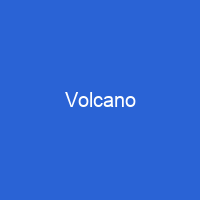What Exactly Is a Volcano?
A volcano is defined as a vent or fissure in the crust that allows hot lava, ash, and gases to escape from a magma chamber below the surface. Imagine it like a giant pressure cooker, where the Earth’s inner heat builds up until it finds a way out. This natural phenomenon has fascinated humans for centuries, but how much do you really know about these fiery mountains?
The Formation of Volcanoes
Volcanoes can form in various ways, including where tectonic plates are diverging or converging. Think of it as a game of tug-of-war between the Earth’s crust and its molten core. When these plates move apart (divergent boundaries), they create non-explosive eruptions, while when they collide (convergent boundaries), violent eruptions occur. This is why you often find volcanic arcs along subduction zones.
Hotspots and Mantle Plumes
Hotspots are volcanic areas formed by mantle plumes rising from the core-mantle boundary, resulting in volcanoes becoming inactive as they drift over the plume and new ones forming where the plate advances. It’s like a conveyor belt of hot magma pushing up through the Earth’s crust. Iceland is a prime example of this process at work, with its volcanic islands forming due to these mantle plumes.
The Types of Volcanoes
Volcanoes can be classified as active, dormant, or extinct based on their frequency of eruption. Active volcanoes are like the ever-burning flame, always ready to erupt. Dormant ones are like a smoldering ember, waiting for the right conditions to reignite. Extinct volcanoes, however, are like ancient relics, no longer active but still holding stories from the past.
The Eruption Process
A volcano requires a magma chamber, conduit, and vent for it to erupt. The erupted material forms a volcanic edifice, which can vary in shape and structure. From conical mountains like Mount Fuji to massive plateaus like the Columbia Plateau, each volcano tells its own unique story of eruption and cooling.
Volcanic Features
Volcanic features include vents that issue lava and gases, volcanic craters, and lakes filling these craters. Other types of volcanoes include mud volcanoes and cryovolcanoes. Mud volcanoes are like nature’s own geysers, spewing out mud instead of water. Cryovolcanoes, on the other hand, erupt liquids and gases from beneath icy surfaces, a phenomenon seen on moons like Enceladus and Europa.
The Impact of Volcanic Eruptions
Large eruptions can affect atmospheric temperature, and volcanoes are not unique to Earth, with examples found on Venus and Mars. The 1815 Mount Tambora eruption caused the ‘Year Without a Summer’ in North America and Europe. This highlights how even distant volcanic events can have global impacts. On other planets, such as Venus and Mars, these eruptions shape their surfaces and atmospheres in ways we are only beginning to understand.
Submarine and Subglacial Volcanoes
Submarine volcanoes are common features of the ocean floor. In shallow water, active volcanoes disclose their presence by blasting steam and rocky debris high above the ocean’s surface. These underwater giants play a crucial role in shaping our oceans and even contribute to the formation of new islands like Iceland. Subglacial volcanoes, on the other hand, develop underneath ice caps, creating unique landscapes that are only now being explored through modern technology.
The History and Science Behind Volcanoes
Volcanic activity has contributed to mass extinctions throughout Earth’s history. From the ancient Greeks attributing volcanic eruptions to gods like Hephaistos, to modern scientists using advanced techniques to understand these natural phenomena, our understanding of volcanoes has evolved significantly. The Moon and other planets also exhibit signs of past volcanic activity, making them fascinating subjects for study.
The Evolution of Volcanic Theory
In the fifth century BC, Anaxagoras proposed eruptions were caused by a great wind. By 65 CE, Seneca the Younger proposed combustion as the cause, an idea also adopted by the Jesuit Athanasius Kircher. Over centuries, theories about volcanic activity have evolved from supernatural to scientific explanations. Today, we understand that volcanoes are driven by the movement of tectonic plates and the release of pressure within the Earth’s mantle.
The Future of Volcanic Research
While some eruptions can be predicted, others may not have useful warning times. Scientists continue to refine their methods for monitoring volcanic activity, aiming to provide better warnings to communities at risk. The study of volcanoes is crucial not only for understanding Earth’s history but also for predicting and mitigating the risks they pose.

In conclusion, volcanoes are more than just fiery mountains; they are complex systems that shape our planet and its history. From the ancient myths of gods and goddesses to modern scientific research, our understanding of these natural wonders continues to grow. As we look towards the future, it is clear that studying volcanoes will remain a vital part of Earth science, helping us better prepare for their inevitable eruptions.
You want to know more about Volcano?
This page is based on the article Volcano published in Wikipedia (retrieved on February 11, 2025) and was automatically summarized using artificial intelligence.





